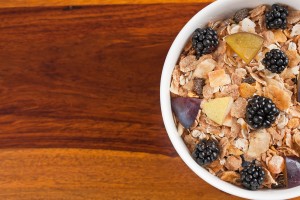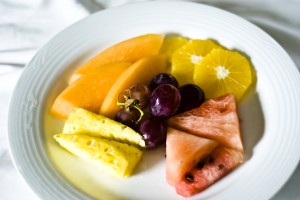 Being a college student who pays for my own groceries, I tend to be as cheap as possible when I’m in the supermarket. One of the areas that I try not to skimp out on is produce. It’s very tempting for me to try to pass by the produce section without making a purchase (due to the price), but being an athlete I know I need the nutrients. My salvation comes in the form of the reduced produce section.
Being a college student who pays for my own groceries, I tend to be as cheap as possible when I’m in the supermarket. One of the areas that I try not to skimp out on is produce. It’s very tempting for me to try to pass by the produce section without making a purchase (due to the price), but being an athlete I know I need the nutrients. My salvation comes in the form of the reduced produce section.
Some people are very apprehensive about buying from the reduced produce section. True, there is the occasional package with the moldy, unidentifiable fruit, but those are the exception, not the rule. Citrus fruits and potatoes tend to be a good buy, because they come from bags that had to be opened due to one bad item. Squash and zucchinis found in the section typically have a nick that doesn’t affect the taste. Apples, pears, kiwis, and bananas typically find their way to reduced produce due to bruises; these fruits can be put to good use in an applesauce or a smoothie.
I got pretty lucky on my last trip; I came back with full packages of tomatoes, pears, bananas, and cucumbers, all for less than $6. When I got back to my dorm, I first checked the tomatoes. There was one that was in fairly bad shape, which I promptly threw out, but the rest were perfectly firm and ready for refrigeration. (I’ve been slicing them up for my sandwiches for the past few days and haven’t had a problem). Then I ate two cucumbers on the spot after cutting away a few large bruises and saved the rest, which were in decent condition, for later. Then, I peeled the bruised bananas and put them in the freezer for a future smoothie. (Peeling first prevents a frozen banana disaster). Lastly, I mashed up the pears, added a few squirts of a lime, put the mixture on the stove, and made some pear sauce!
A trip to the reduced produce section can be hit or miss. For me, a few good finds in the reduced produce section can result in a week of healthier snacking. If the reduced produce section is empty, I buy the cheapest available fruits and vegetables. If one has flexibility for the time when one shops, morning is the best time for reduced produce, because that is typically when it is restocked.
You should only buy produce that you intend to consume, prepare, or freeze in the very near future. Buying from reduced produce certainly does take a bit of extra thought and care, but it’s a great way to increase the amount of fruit and veggies in one’s diet while keeping the grocery budget low.





